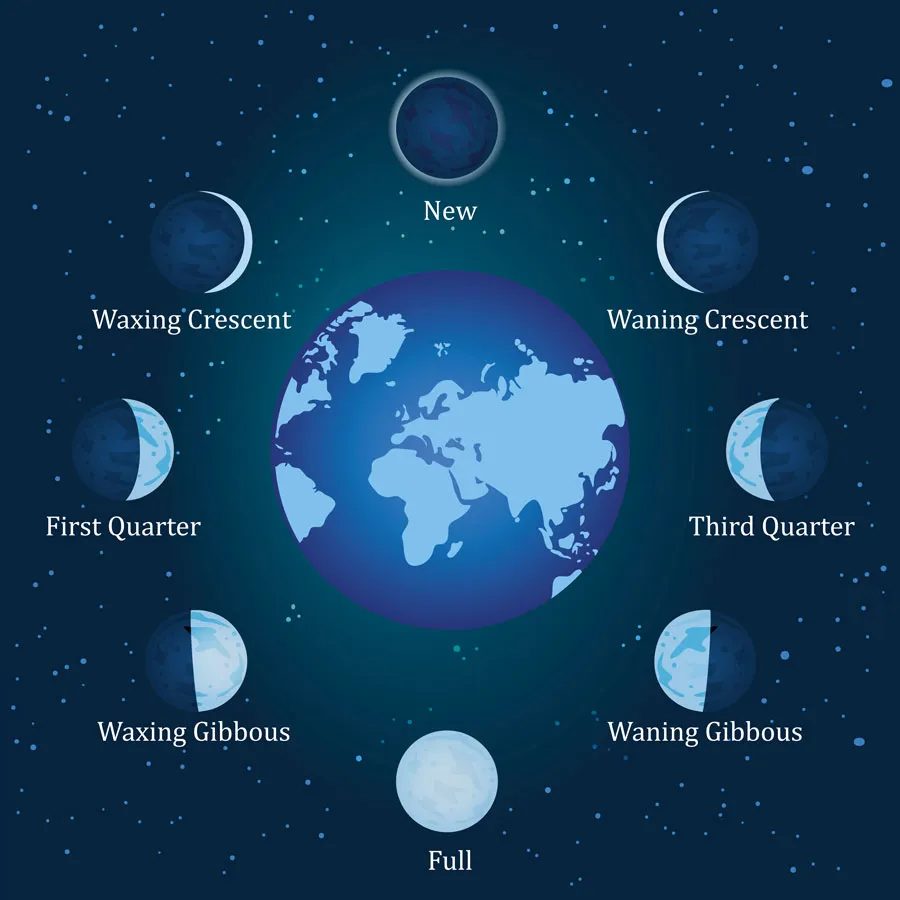Another month means another new Moon as the lunar cycle begins afresh. While the Moon itself likely won’t be visible to the naked eye at this time, the night sky should be darker for better stargazing.
The lunar event in July marks the first new Moon since the summer solstice, meaning it’s the first new Moon of summer 2023.
Read on below to find out when the new Moon is, and what constellation the new Moon will be in this July.
When is the new Moon in July 2023?
The new Moon in July 2023 will occur at 7:31pm on 17 July (UK time). This is the time at which the Moon is between the Earth and the Sun.
The new Moon will appear in the US at the following times:
- 2:31pm Eastern time (ET)
- 1:31pm Central time (CT)
- 11:31am Pacific time (PT)
In the UK, moonrise takes place at 4:09am, with moonset happening at 9:52pm on 17 July UK time. This time will vary by location.
Given that the Sunrise took place at 5:12am, with a Sunset of 9:17pm, the new Moon will be up during daylight hours as it keeps pace (more or less) with the Sun as it arcs across the sky. This means we won’t be able to see the new Moon as it will be hidden by the Sun’s glare.
What is a new Moon?
The new Moon is the beginning of the lunar cycle. Due to its pace-keeping with the Sun’s rise and set, you probably won’t be able to see the Moon in this phase as it will appear completely dark in the sky.
This happens because every 29.53 days, the Moon comes between the Sun and the Earth in a straight-line configuration, making the celestial body’s illuminated side face away from Earth.
To put it simply, the new Moon appears entirely in shadow. On the flip side, the full Moon takes place when the face of the Moon we see from the Earth is illuminated entirely by the Sun.
Following on from the new Moon, the lunar cycle moves onto the waxing crescent, first quarter, waxing gibbous, full Moon, waning gibbous, third quarter, and then waning crescent phases.

If there are two new Moons in the same calendar month, that particular phenomenon is known as a Black Moon. The next Black Moon will occur in December 2024.
Can you see a new Moon with the naked eye?
You cannot see a new Moon with the naked eye, typically speaking. The side of the Moon we see from the Earth is not illuminated by the Sun and the Moon is hidden from us by the glare of the Sun.
A thin crescent of the Moon should be visible in the next few days following the new Moon, though. This event is known as Earthshine.
Thanks to its proximity to the Sun, you likely won’t be able to see the new Moon with a telescope or binoculars, either. You can spot a new Moon if it’s taking place at the same time as a solar eclipse, however.
What constellation will the new Moon be in this July?
On 17 July, the new Moon will appear to the northwest tip of the constellation of Gemini and to the east of Cancer. At the time of the event, though, the new Moon will be in the vicinity of the Sun and will be nearly impossible to see. We don’t recommend looking for it as you might blind yourself in the process!
Read more:
